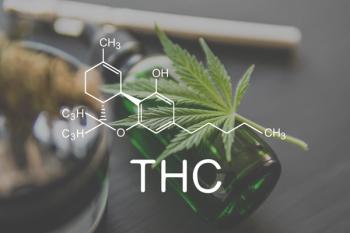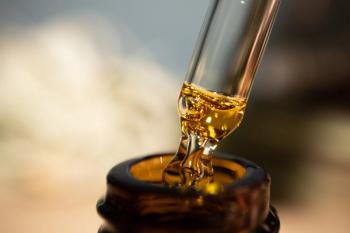
Cannabis Science and Technology
- July/August 2025
- Pages: 12-15
Why Mandated Methods for Limit of Detection Determination Do Not Work

Key Takeaways
- Traditional LOD methods, like signal-to-noise ratios, are inadequate for multi-signal mass spectrometry techniques such as SIM and MRM.
- Cannabis testing regulations often require outdated LOD determination methods, complicating the adoption of more robust strategies.
Conventional approaches for determining limits of detection (LOD), such as signal-to-noise ratios and repeated measurement methods designed for single-signal detection, can result in unrealistic LOD values because they often fail to account for multi-signal identification and the disproportionate generation of analyte and noise signals in mass spectrometry techniques such as selected ion monitoring (SIM) and multiple reaction monitoring (MRM). This article proposes a practical alternative compared to standard approaches.
Conventional approaches for determining limits of detection (LOD), such as signal-to-noise ratios and repeated measurement methods designed for single-signal detection, can result in unrealistic LOD values. These traditional methods often fail to account for multi-signal identification and the disproportionate generation of analyte and noise signals in mass spectrometry techniques such as selected ion monitoring (SIM) and multiple reaction monitoring (MRM). SIM and MRM require use of multiple signals (for example, ion ratios) for compound identification and without identification there is no detection. Despite these limitations, some cannabis testing regulations mandate the use of these standard LOD determination practices. As a result, laboratories may find it challenging to implement more scientifically robust strategies for detection limit assessment. This article aims to convince you that these popular approaches miss the mark and are not fit-for-purpose. A practical alternative is proposed and compared to standard approaches, demonstrating why conventional approaches can be inadequate.
State cannabis regulations sometimes require licensed laboratories to define and verify method limit of detection (LOD) when testing chemical contaminants (pesticides, heavy metals, residual solvents, etc.). Most states adopt definitions consistent with government agency guidelines and scientific organizations: LOD is generally the smallest analyte concentration distinguishable from a blank (often 99% confidence). In practice, many states require labs to establish these values during method validation and report them on Certificates of Analysis (COAs) (1,2).
States point to popular approaches for LOD determination like use of signal-to-noise ratio (S/N), standard deviation of replicate blanks or low-level spiked samples, or state that labs may adopt any recognized FDA/EPA or other recognized organization methods. Popular approaches include (3-6):
1. Signal-to-Noise Method: LOD is where S/N≈3. This is easy but depends on consistent noise measurement.
2. Blank/Low Level Replicates Methods: There are several versions of determining LOD using the standard deviation of replicate measurements. Replicate measurements of blanks or low-concentration samples, typically fortified samples, can be used. Spike levels need to be near the LOD to capture a standard deviation representative of low signal. Popular formulas using standard deviation include:
- LOD=3.3 x SD/Slope
- LOD = 3 x SD
- LOD = k x SD where k is often referred to as a “confidence level factor”
The k factor is determined based on degrees of freedom of replicate measurements and the confidence level that you want to use. The k value is a Student t-value pulled from the concept of probabilities. In fact, the factors 3 and 3.3 used above are also rooted in the same statistics and represent an approximate 95-99 % confidence range for a reasonable number of replicate measurements, five to ten.
While these approaches are well-documented and details are easily accessible, the key point here is to assess their suitability for multi-signal methods.
All these approaches rely directly on a single signal-like response, intensity, or area counts. In other words, analytes are detected based on having a signal intensity that is distinguishable from background or noise. This is not the case for methods that rely on multiple signals to detect or identify a compound. In SIM and MRM modes, one typically monitors a quantifier ion/transition and ≥1 qualifier ions/transitions for each analyte. The quantifier is used for calibration/quantitation and typically has higher signal intensity than the qualifier ions. Qualifiers confirm compound identity by ion ratios*. The compound is not identified unless ion ratio criteria are met, meaning the ion ratio value must be within a certain range. For SIM/MRM based methods, there is no detection without identification.
Let’s review the LOD determination approaches but now considering SIM and MRM mass spectrometry-based methods and compound identification - ion ratio matching.
1. Signal-to-Noise Method: There are two critical points to consider when using signal-to-noise ratio for LOD estimation. One is that signal-to-noise is not necessarily related to identification criteria, and the second is the generation of noise in SIM and MRM mass spectrometry detection.First, how do you apply S/N criteria to more than one signal that is required to identify an analyte? Would you require a S/N of 3 for both quantitative and qualifying ions? For only the quantitative ion? Does S/N of any ion matter if ion ratio criteria are not met? I have seen different approaches, but most often only the S/N for the quantitative ion is considered. If ion ratios are not met, the S/N values are not relevant.
Additionally, it is important to consider what S/N in SIM and MRM mass spectrometry represents. S/N ratio is the ratio of the intensity of two signals. The signal of the analyte is ratioed to the signal generated in the absence of the analyte or background. SIM and MRM modes can be thought of as selectively removing noise signal, often resulting in ultra-low, near-zero noise. The S/N values in these cases can be very high, even listed as infinity, with some software algorithms. S/N values that rely on low analyte response and near-zero noise, give a false impression of an LOD. In addition, parameters like signal thresholds and peak smoothing can significantly change S/N values, but without changing the detectability of the analyte (7-9).
It is hard to see how use of S/N is suitable for determining the detection of analyte based on the disproportionate generation of noise signal and the need to meet ion ratio(s) to identify a compound.
2. Blank/Low Level Replicates Methods: These methods depend on the standard deviation of replicate measurements, assuming analyte detection is based on a single signal. This raises questions like those for signal-to-noise: Is the standard deviation relevant only to the quantitative ion signal? Should it be taken from the lowest qualifier ion? Or only when ion ratio criteria are met? Such details are often overlooked
in practice.
Frequently, only the quantitative ion signal is considered without applying ion ratio criteria. As a result, standard deviation data is often drawn from concentrations below where ion ratio criteria are met, leading to unrealistically low LOD values. While this allows labs to report LODs that meet regulatory thresholds, like 10% of an action limit, calculated LODs are often not verified experimentally.
All these approaches for estimating the LOD require the use of either very low concentration spiked samples or blanks. However, when confirmatory mass spectrometry (MS)-based detection is employed, meeting ion ratio identification criteria typically necessitates higher analyte concentrations. This is because, in addition to detecting one or more lower intensity qualifying ion signals, these signals must also be sufficiently repeatable to satisfy ion ratio requirements, resulting in a higher effective LOD compared to using only the quantitative ion signal. When assessing a series of analyte levels near the detection threshold, failure often occurs when ion ratios deviate from the acceptable range, rather than transitioning directly from the presence of a peak to no peak.
Ultimately, applying LOD approaches developed for single signal detection related to noise signals may not be suitable. A more practical method is to establish the concentration at which identification criteria are reliably met; I am calling this the Limit of Identification approach. Guidance focusing on analyte identification for LOD can be found in Analytical Quality Control and Method Validation Procedures for Pesticide Residues Analysis in Food and Feed (6).
The approach I take is simple. The general process involves testing a series of concentrations, typically using matrix-matched standards since solvent-only standards are uncommon for trace-level analysis. Multiple injections are carried out, usually seven to ten per concentration level, recording concentration where ion ratio criteria are satisfied for all replicates. This ensures reliability in meeting identification criteria within an in-matrix instrument detection experiment. After determining the identification level for each compound, selected concentrations are used in a method detection limit study, involving the spiking of samples and complete method processing. This approach aims to enable reliable detection and identification of compounds consistent with how methods establish compound presence in client samples.
Let’s look at data and compare different approaches. The following data is based on eight replicate injections of a pesticide standard in solvent. This measurement reflects an instrument detection limit, though the procedure is similar for determining a method detection limit, which involves processing samples through the complete method. Four concentrations, from 100 to 0.1 pg of analytes injected, were evaluated using gas chromatography-tandem mass spectrometry (GC-MS/MS) operating in MRM mode. Identification criteria included retention time matching and ion ratio matching within 30%, relative. The analysis focuses on myclobutanil, a pesticide that is regulated in some legal cannabis jurisdictions. The estimated detection limit was determined by multiplying the standard deviation of replicate measurements (area counts) by 2.998, corresponding to the Student’s t-value for eight replicates at a 99% confidence level. This calculation describes the Blank/Low Level Replicates Methods approach. The Signal-to-Noise Method relies on values generated by the instrument software processing results. The Limit of Identification Method refers to the lowest concentration that meets identification criteria for all eight replicate injections.
Table 1 illustrates the challenges associated with establishing accurate LOD values when multiple signals are employed for compound identification. The data indicate that myclobutanil is consistently detected at 1 pg, as ion ratio criteria were satisfied across all eight injections. Therefore, 1 pg serves as a practical benchmark for the estimated Limit of Identification or LOD, given confirmed identification at this level and failure to meet identification criteria at lower concentrations. Adopting a calculated replicate-based approach yields unreasonable values, as myclobutanil could not be identified in those cases. Calculating an LOD based on 0.1 pg data—disregarding ion ratio criteria—results in a value of 0.066 pg; however, since ion ratio criteria are unmet at 0.1 pg, achieving reliable identification at 0.066 pg is not feasible. Conversely, applying a more conservative strategy that uses replicate data from the 1 pg level, where ion ratio criteria were met for all eight replicates, still produces a calculated detection limit near 0.1 pg, a level we know does not satisfy identification requirements.
S/N values are well above 3. If we extrapolate using the 0.1 pg and 1 pg, where all replicated passed ion ratio criteria, we estimate S/N of 3 corresponding to approximately 0.002 pg and 0.003 pg. We have experimentally confirmed that myclobutanil cannot be identified/detected repeatedly at 0.1 pg. The use of S/N may not be applicable under these conditions. The only method that allows me to confidently detect myclobutanil is to establish a limit of identification. All other approaches resulted in estimated LOD values experimentally shown to fail compound identification criteria.
I hope that this article has offered insights into why LOD approaches, initially designed for single-signal, normal-noise generating detection, may not be appropriate for SIM and MRM mode mass spectrometric methods. Analytical methods for pesticides, mycotoxins, and residual solvents only detect a compound when it is identified. Determining a limit of identification, call it an LOD if you want, should be considered an appropriate approach for these methods. The other approaches make checking the regulatory box easier and adopting a practical approach, as described above, may require additional experimental work but it results in a reliably achievable LOD.
*For simplicity, SIM and MRM signals will be described as ion signal and ion ratios instead of using both ion and transition terms.
References
- Cannabis Regulatory Agency, Sampling and Testing-Technical Guidance for Marijuana Products (September 23, 2024).
- State of Maine, Emergency Rules for the Certification of Marijuana Testing Facilities (September 2019).
- ICH, Q2(R1) Validation of Analytical Procedures: Text and Methodology, Step 4 version (1994).
- Eurachem. The Fitness for Purpose of Analytical Methods: A Laboratory Guide to Method Validation and Related Topics, Second Edition (2014).
- CFR Title 40, 136 (Government Printing Office, Washington, DC) 87-389
- EURL. Analytical Quality Control and Method Validation Procedures for Pesticide Residues Analysis in Food and Feed, Sante 11312/2021 v2 (2024).
- Wells, G; Prest, H.; Russ, C.W. IV. Signal, Noise, and Detection Limits in Mass Spectrometry. Agilent Technologies, Inc. 2023, 5990-7651EN
- Wells, G; Prest, H.; Russ, C.W. IV. Why use Signal-To-Noise as a Measure of MS Performance When it is Often Meaningless?Agilent Technologies, Inc.2011, 5990-8341EN
- Winkler, P. Important Considerations for Proper Determination of Limits of Detection and Limits of Quantitation. 56th Annual NACRW.
About the Columnist
Julie Kowalski is a technical consultant primarily serving the cannabis and hemp testing market. She earned her graduate degree in Analytical Chemistry. Her professional experience includes troubleshooting, method development and validation for GC, GC-MS, LC, and LC-MS/MS in addition to extensive pesticide residue analysis experience and chromatography method development. With over ten years at a technology provider, she has served as Scientific Director and Chief Scientific Officer for a cannabis testing lab. She has served as the President of the North American Chemical Residue Workshop, served on AOAC Expert Review Panels, the Cannabis Scientific Task Force for Washington State, chaired the AOAC CASP Chemical Contaminants Working Group and is currently chairing the AOAC CASP Pesticide Think Tank. Julie is a part of Saturn Scientific, LLC, an interdisciplinary team of experienced scientists that leverage their collective expertise to perform technical investigations for the cannabis and hemp industries.
How to Cite this Article
Kowalski, J. Why Mandated Methods for Limit of Detection Determination Do Not Work, Cannabis Science and Technology, 2025, 8(4), 12-15.
Articles in this issue
Newsletter
Unlock the latest breakthroughs in cannabis science—subscribe now to get expert insights, research, and industry updates delivered to your inbox.





